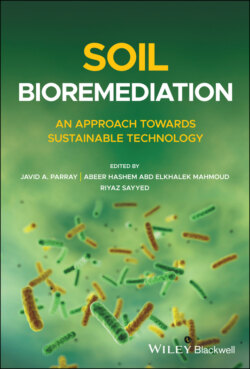Читать книгу Soil Bioremediation - Группа авторов - Страница 52
3.3.1.2 Decolorization of Dyes
ОглавлениеThe textile industry accounts for most of the dyestuff market and utilizes large volumes of water and chemicals. The chemical reagents used are very diverse in chemical composition, ranging from inorganic compounds to polymers and organic products. Due to their chemical structure, dyes are resistant to fading on exposure to light, water, and different chemicals and most of them are difficult to decolorize due to their synthetic origin [19, 20].
Several dyes are made from known carcinogens like benzidine and other aromatic compounds. Most currently existing processes to treat dye wastewater are ineffective and not economical. Therefore, the use of enzyme laccases seems like an attractive solution due to their potential in degrading dyes of various chemical structure including synthetic dyes currently used in many industries. The use of laccase in the textile industry is growing very fast since, besides decolorizing textile effluents, laccase is used to bleach textiles and even to synthesize dyes [21, 22]. They could also be used for decolorizing the dye‐house effluents that are hardly decolorized by conventional sewage treatment plants.
